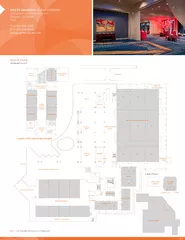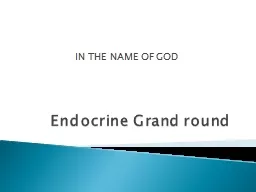PPT-IN THE NAME OF GOD GRAND ROUND
Author : CitySlicker | Published Date : 2022-08-03
9985 PROBLEM LIST 13yo girl with Hisutism Amenorrhae Increased testosterone level Streaky gonad Pelvic mass Left salpingo oophorectomy Gonadoblastoma
Presentation Embed Code
Download Presentation
Download Presentation The PPT/PDF document "IN THE NAME OF GOD GRAND ROUND" is the property of its rightful owner. Permission is granted to download and print the materials on this website for personal, non-commercial use only, and to display it on your personal computer provided you do not modify the materials and that you retain all copyright notices contained in the materials. By downloading content from our website, you accept the terms of this agreement.
IN THE NAME OF GOD GRAND ROUND: Transcript
Download Rules Of Document
"IN THE NAME OF GOD GRAND ROUND"The content belongs to its owner. You may download and print it for personal use, without modification, and keep all copyright notices. By downloading, you agree to these terms.
Related Documents














